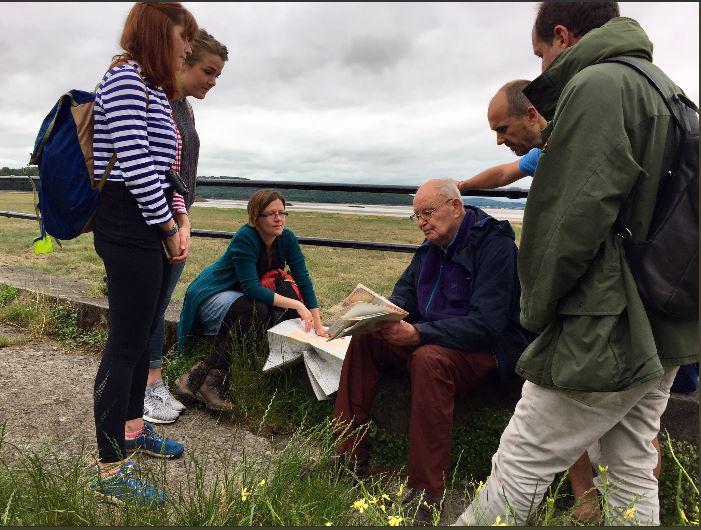
What have your career highlights been up until now?
- My number one highlight is that after 25 years ialeUK is highly active and going from strength to strength. In the first meetings the contributions were mainly from ecologists with an interest in landscape level analysis. But, over the years ialeUK has played a leading role in the development of the discipline of Landscape Ecology.
- Papers in Landscape Ecology increasingly use quantitative methods and GIS has evolved from an interesting computing procedure into an integral part of many studies.
- IaleUK has developed a tradition of a good social life at meetings epitomized by some famous evenings e.g. the night and morning in Ballycastle at the Northern Ireland conference.
Image below of Bob in Estonia (Credit: Sansnas via YouTube)

In 2011 you contributed to a book called 'Exploring the boundaries of landscape architecture' Can you summarise some of the thoughts you had at the time, and whether you think they still matter in 2017?
Gardens, landscape management and urban open space planning are not generally regarded as landscape ecological subjects, as the latter is primarily a scientific discipline. However, landscape ecology concepts and results could be incorporated into landscape design in many ways. For example, planting patches of native bee-friendly species or exotic species known to be high in nectar in new housing developments so that insects could move easily between them.
Landscape architects have been involved in many ialeUK workshops and the potential for synergism is high, but more efforts are needed from both sides. A particular topic where the two disciplines could collaborate is landscape description and classification. This is because the potential for using quantitative methods to ensure that types are statistically robust and are independent of individual bias has never been realized.
You have recently published a paper in Landscape Ecology called 'Urban habitats biodiversity assessment: a standardized procedure for recording biodiversity and its spatial distribution in urban environments' - what are your thoughts on what we know/don't know about biodiversity in cities?
- there are insufficient studies of biodiversity resources in cities, both of local native species but also exotics, because these can be important sources of nectar. A standard method is now available for surveillance and monitoring biodiversity in cities following a study in Porto, Portugal;
- in most cities there are inadequate records of exotic species which may be endangered in their country of origin;
- the expansion of beekeeping in London indicates the availability of nectar plants, but information is needed for other insect groups; and
- there have been studies of plants in cities (e.g Zurich), but the extent of naturalised species needs assessment, as does the threat of invasive species.
Why should students or researchers join ialeUK?
- ialeUK provides a friendly audience to present your research to, and will provide valuable discussions before and after your talk;
- there are great opportunities at meetings, for young researchers to listen to stimulating scientific papers on a range of subjects;
- you can meet people with common interests and enjoy the community spirit that takes place in the evenings; and
- you can participate in excursions and worshops where practical research aspects are discussed in a range of suitable locations.
.